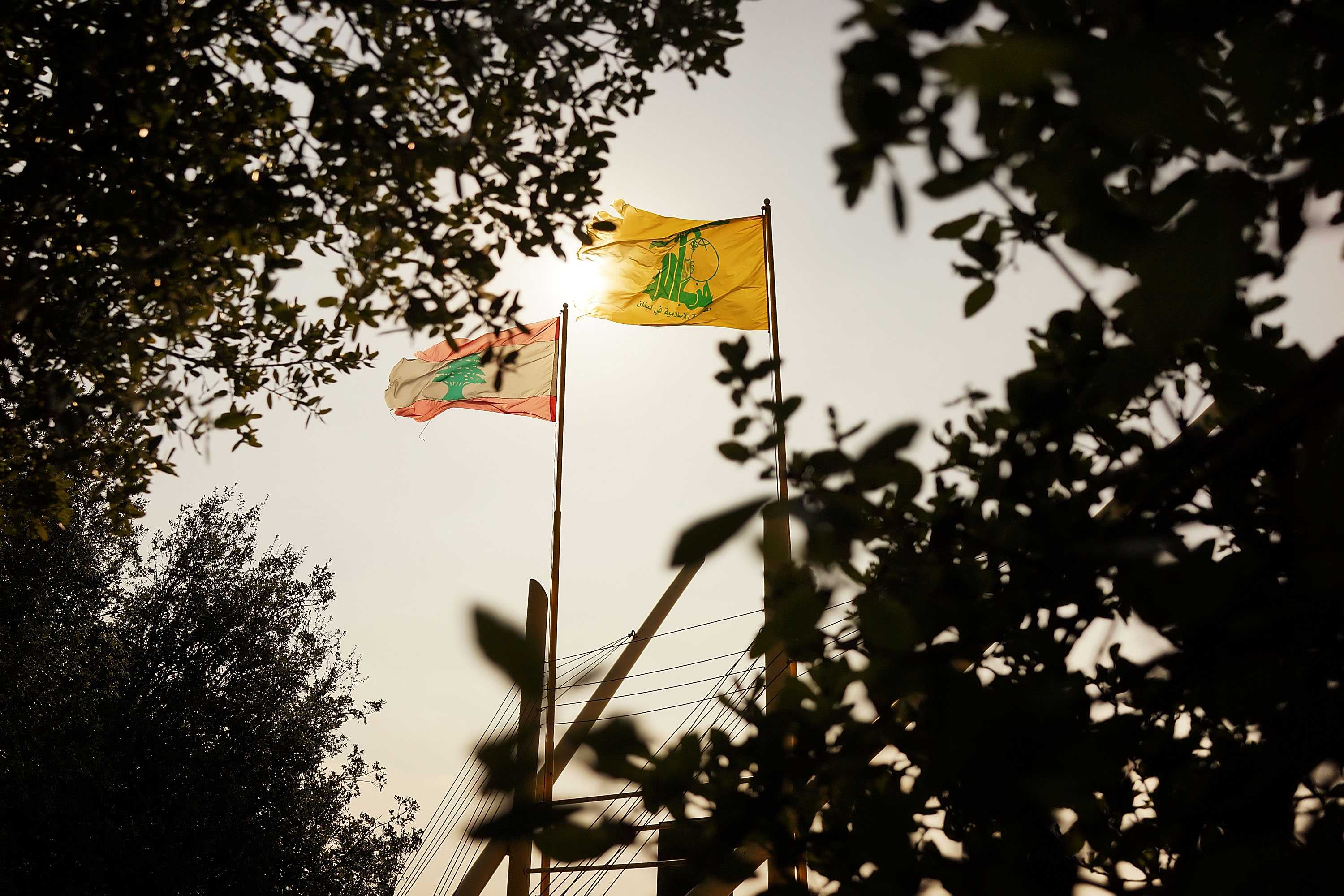 MLEETA, LEBANON – NOVEMBER 14: The Lebanese and Hezbollah flags fly at the Resistance Museum, a showcase built by the Shi’ite militia group Hezbollah which controls large swaths of southern Lebanon on November 14, 2013 in Mleeta, Lebanon. The museum, which sits on the a hilltop about 90 kilometers from the border with Israel, has already received a half a million visitors since opening in 2010. The sprawling museum features tunnels used by Hezbollah, captured Israeli tanks and walking paths that go through areas where the fighters launched attacks. In 2006 Hezbollah fought a violent month-long war with Israel in which the group fired rockets at Israeli towns and cities while being bombarded daily with missiles from Israeli warplanes. (Photo by Spencer Platt/Getty Images)
MLEETA, LEBANON – NOVEMBER 14: The Lebanese and Hezbollah flags fly at the Resistance Museum, a showcase built by the Shi’ite militia group Hezbollah which controls large swaths of southern Lebanon on November 14, 2013 in Mleeta, Lebanon. The museum, which sits on the a hilltop about 90 kilometers from the border with Israel, has already received a half a million visitors since opening in 2010. The sprawling museum features tunnels used by Hezbollah, captured Israeli tanks and walking paths that go through areas where the fighters launched attacks. In 2006 Hezbollah fought a violent month-long war with Israel in which the group fired rockets at Israeli towns and cities while being bombarded daily with missiles from Israeli warplanes. (Photo by Spencer Platt/Getty Images) The United States engaged in retaliatory strikes against Hezbollah’s Iraqi militia on March 12 in response to an attack against a U.S. military base the previous day.
Two Americans — a soldier and a contractor — in addition to a British soldier died in the March 11 rocket attack on Camp Taji, just north of Baghdad. Fourteen people were injured, five of whom required serious medical attention, Reuters reported.
According to the Associated Press and USA Today, the U.S. targeted several Kataib Hezbollah sites, the group believed to behind the March 11 rocket attack. March 11 also would have been the birthday of Iranian Gen. Qassem Soleimani, who was killed in a U.S. military strike in January.
Defense Secretary Mark Esper told reporters on March 12 before the retaliatory strikes, “Yesterday’s attack by Iranian-backed Shia militia groups consisted of multiple indirect fires that originated from a stationary platform and was clearly targeting coalition and partner forces on Camp Taji.”
He vowed that the U.S. would hold the militia groups “accountable. You don’t get to shoot at our bases and kill and wound Americans and get away with it.”
President Donald Trump said before the strikes on March 12 that although it wasn’t completely conclusive that Iran was behind the strikes, “most likely it looks like it could be backed by Iran.”























 More news and opinions than at a Shabbat dinner, right in your inbox.
More news and opinions than at a Shabbat dinner, right in your inbox.